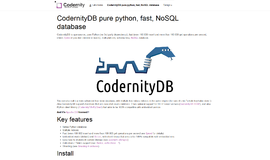
What is it all about?
Galaxy is a high-performance in-memory data-grid (IMDG) that can serve as a basis for building distributed applications that require fine-tuned control over data placement and/or custom distributed data-structures. Galaxy is distributed in-memory data grid that horizontally scales Quasar’s actors across a cluster. Galaxy uses cache-coherence protocols across the network, and ensures that virtually all data queries and transactions are served with no need for IO.
Key Features
* Application code runs on the same cluster nodes (called peer nodes), and processes the data objects, which are kept in RAM. * Galaxy stores data in a fully consistent manner, meaning that if data item B has been modified after a change to data item A, no node in the cluster will see A’s new value but B’s old one. * The data items can optionally be persisted to disk on one or more special nodes called server nodes. * Galaxy can withstand a failure in one or more of the nodes, providing high-availability. This is achieved by either running Galaxy with a server node (which persists all of the grid data to disk) or by running a slave node (or more) for each of the peers, or both. * Galaxy provides a point-to-point messaging service that guarantees message delivery and ordering. A message can be sent to a known node or to the unknown (to the application) owner of a given data item. So if Galaxy’s data-item migration makes moving data to code simple, Galaxy’s messages make moving an operation (code) to data just as simple. * All of Galaxy’s components are monitored to enable full diagnoses of failure or performance problems.
Compare Products
Select up to three two products to compare by clicking on the compare icon () of each product.
{{compareToolModel.Error}}















